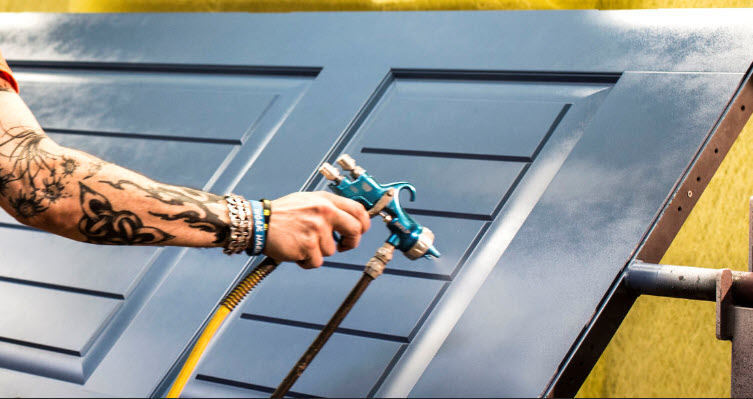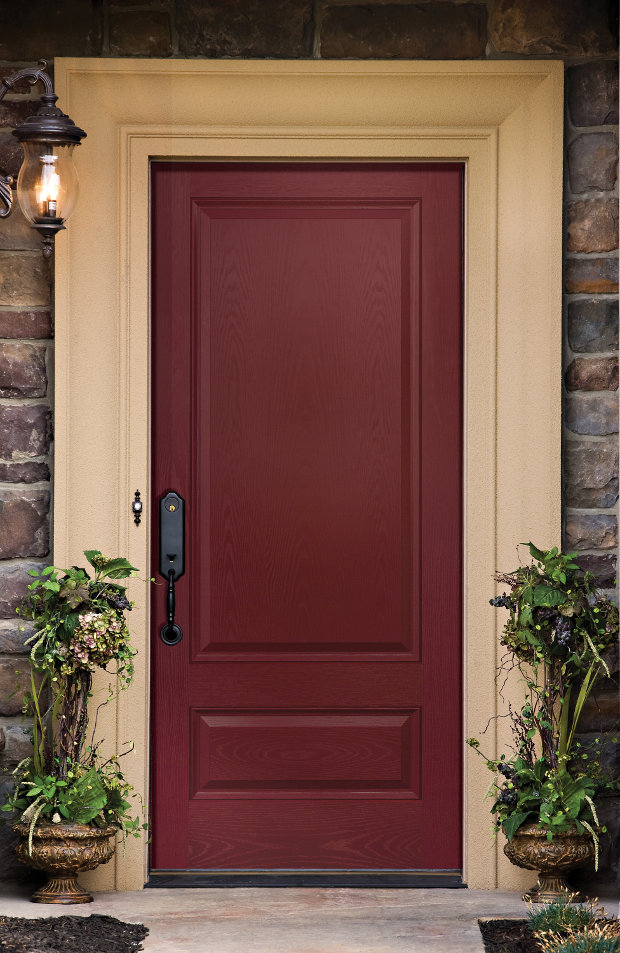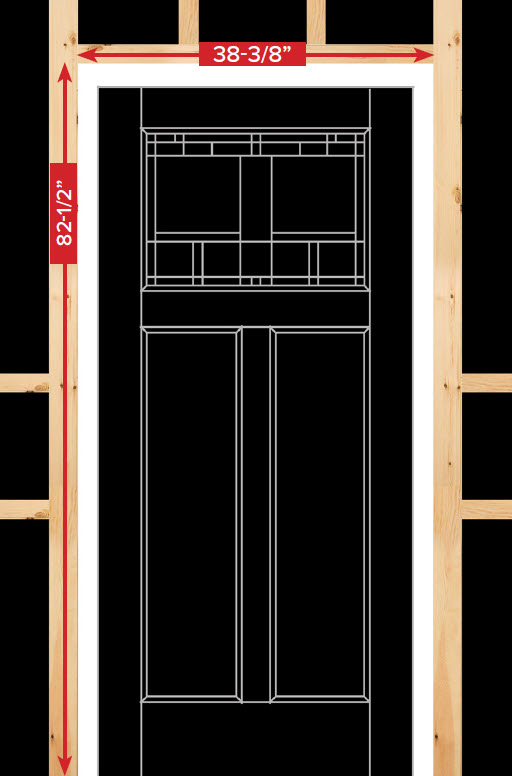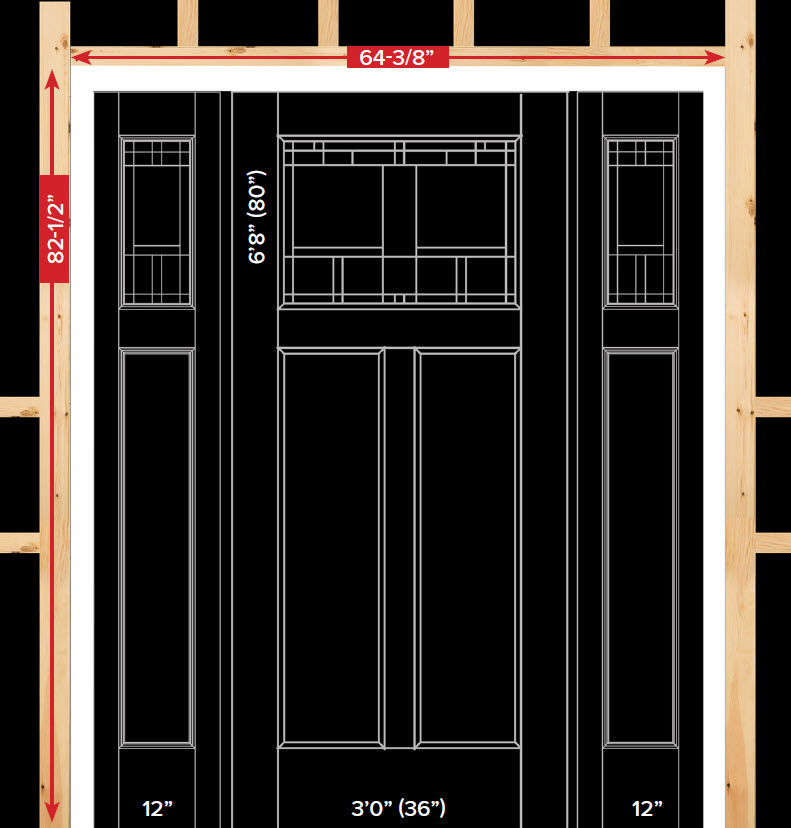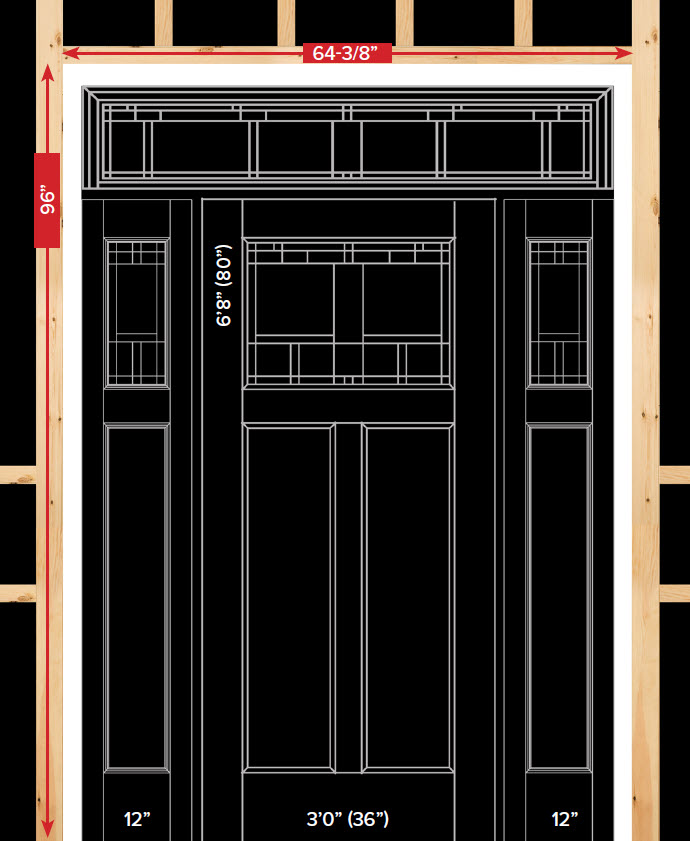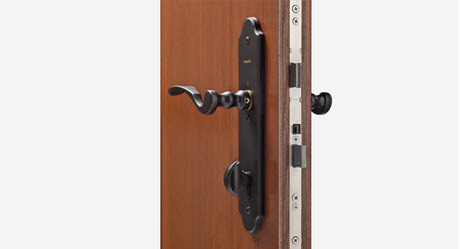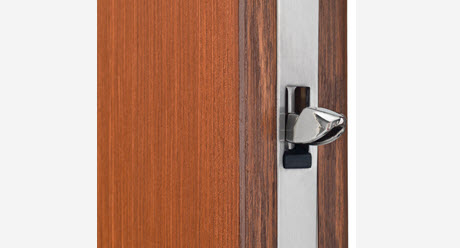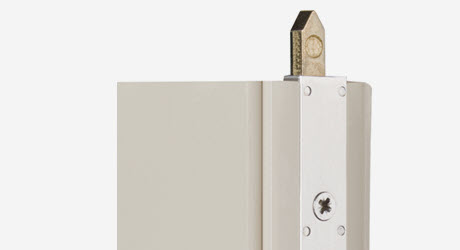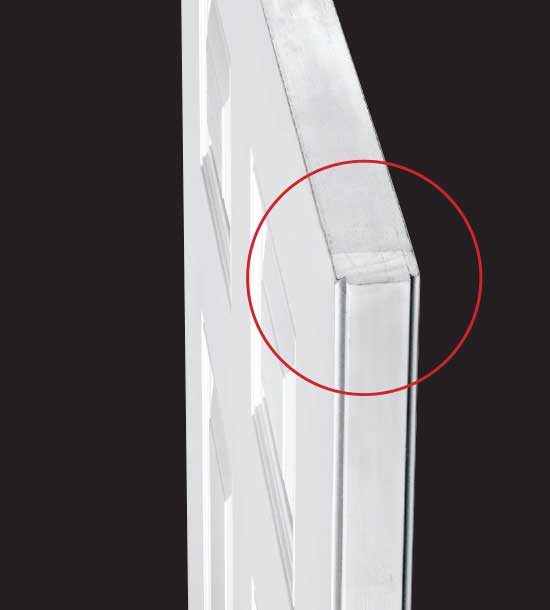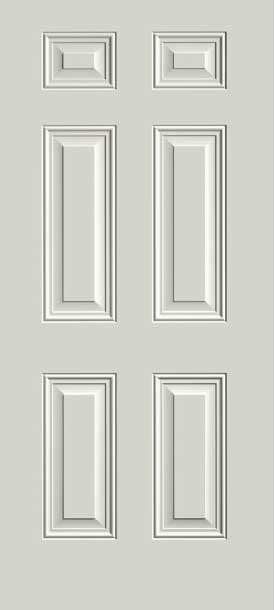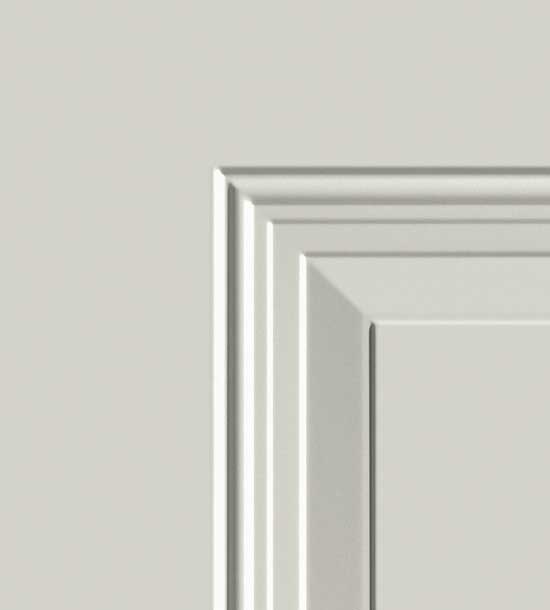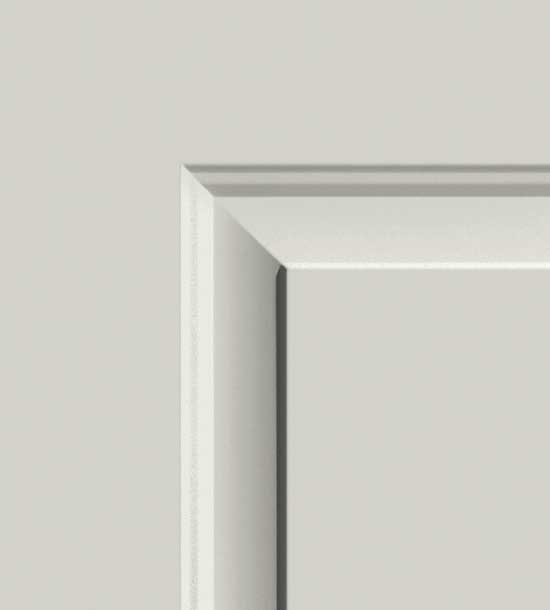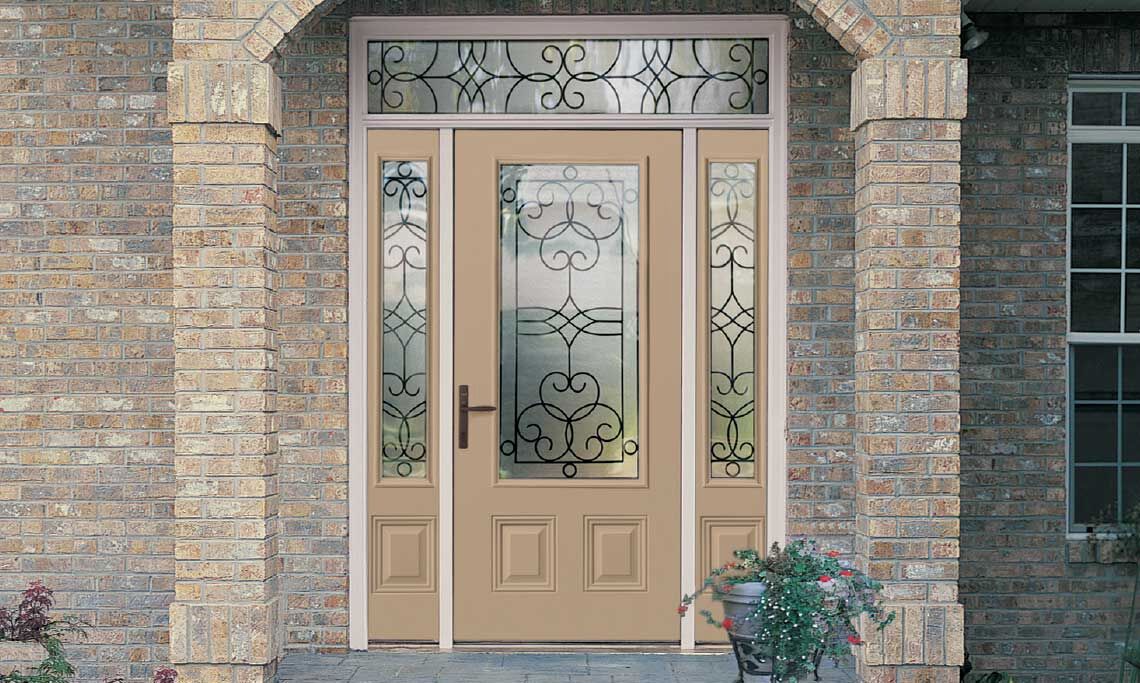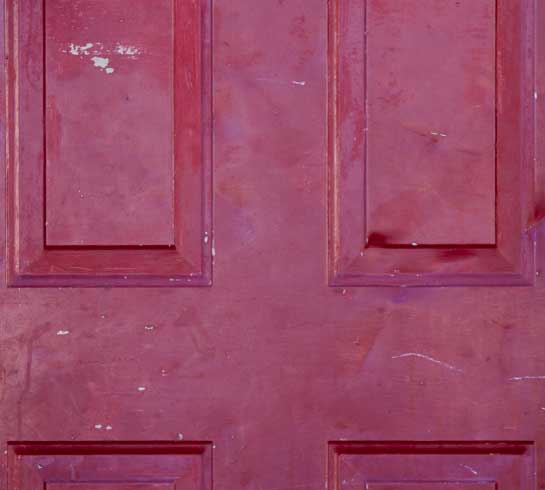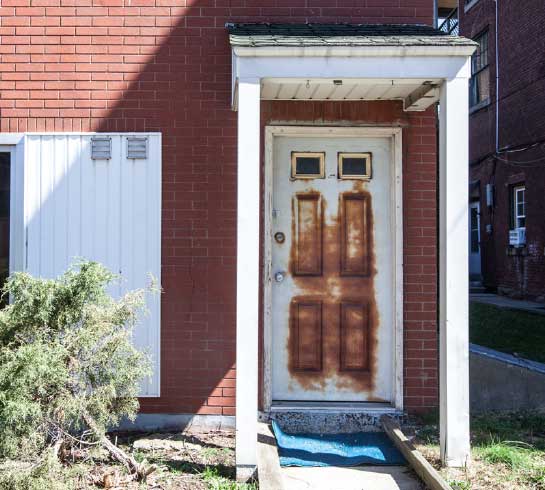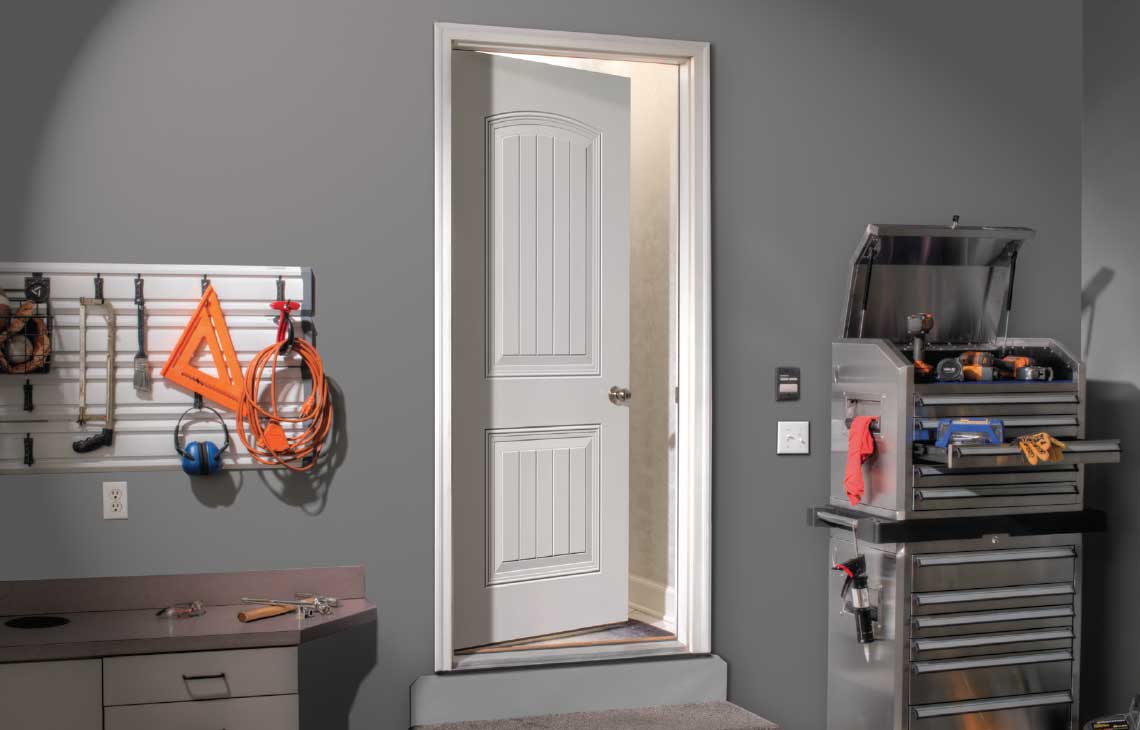All doors have some sort of latching mechanism to hold the door tight against the weather strip for a good seal, and a lock to provide security. Locks come in a variety of styles, options, and finishes, but generally fall into three categories: cylindrical, mortise, and multi-point.
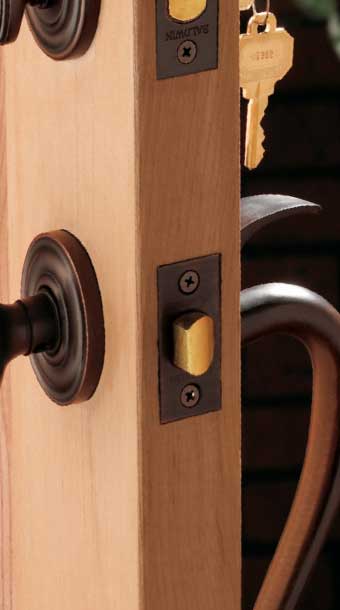
Cylindrical Lock Prep
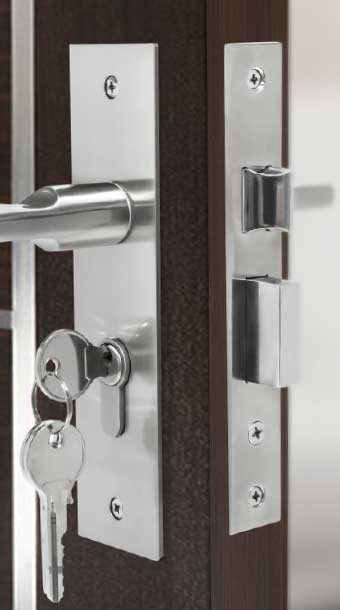
Mortise Lock Prep
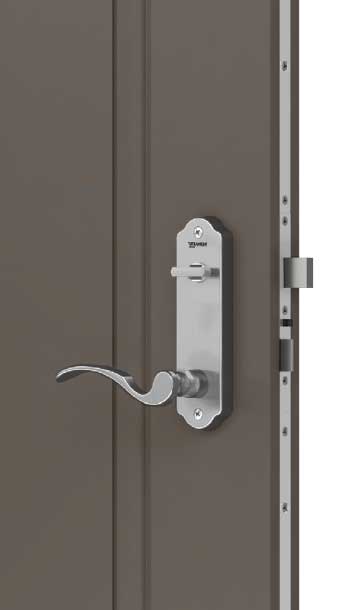
Multi-Point Lock Prep
Cylindrical Locks
Cylindrical locks require a circular hole in the face of the door to accommodate the lock chassis, and a cut in the edge of the door for the latch bolt. This lockset has a quick and easy installation making them very common in homes, and offices, in both interior and exterior doors.
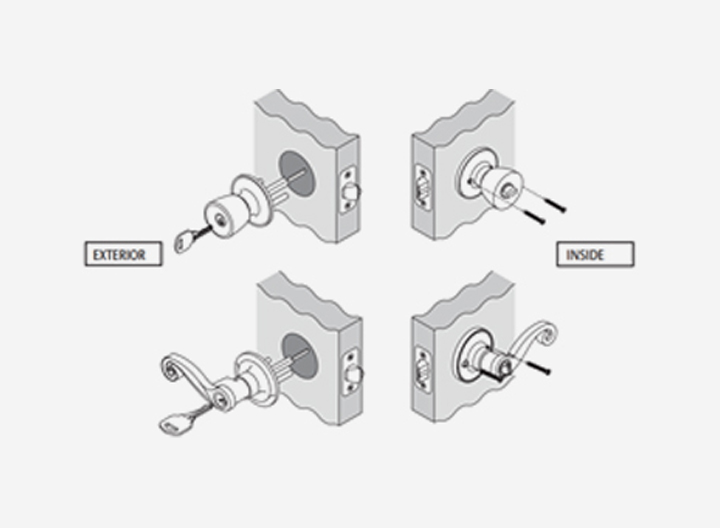
Mortise Locks
Mortise locks sit in a rectangular pocket in the door. They offer a few advantages but the most important is added security and stopping power. The box is totally concealed when the door is closed. Mortise locks also include a feature which prevents the ability to retract the latch with a credit card, and they are more aesthetically pleasing because of their clean look and old antique charm.
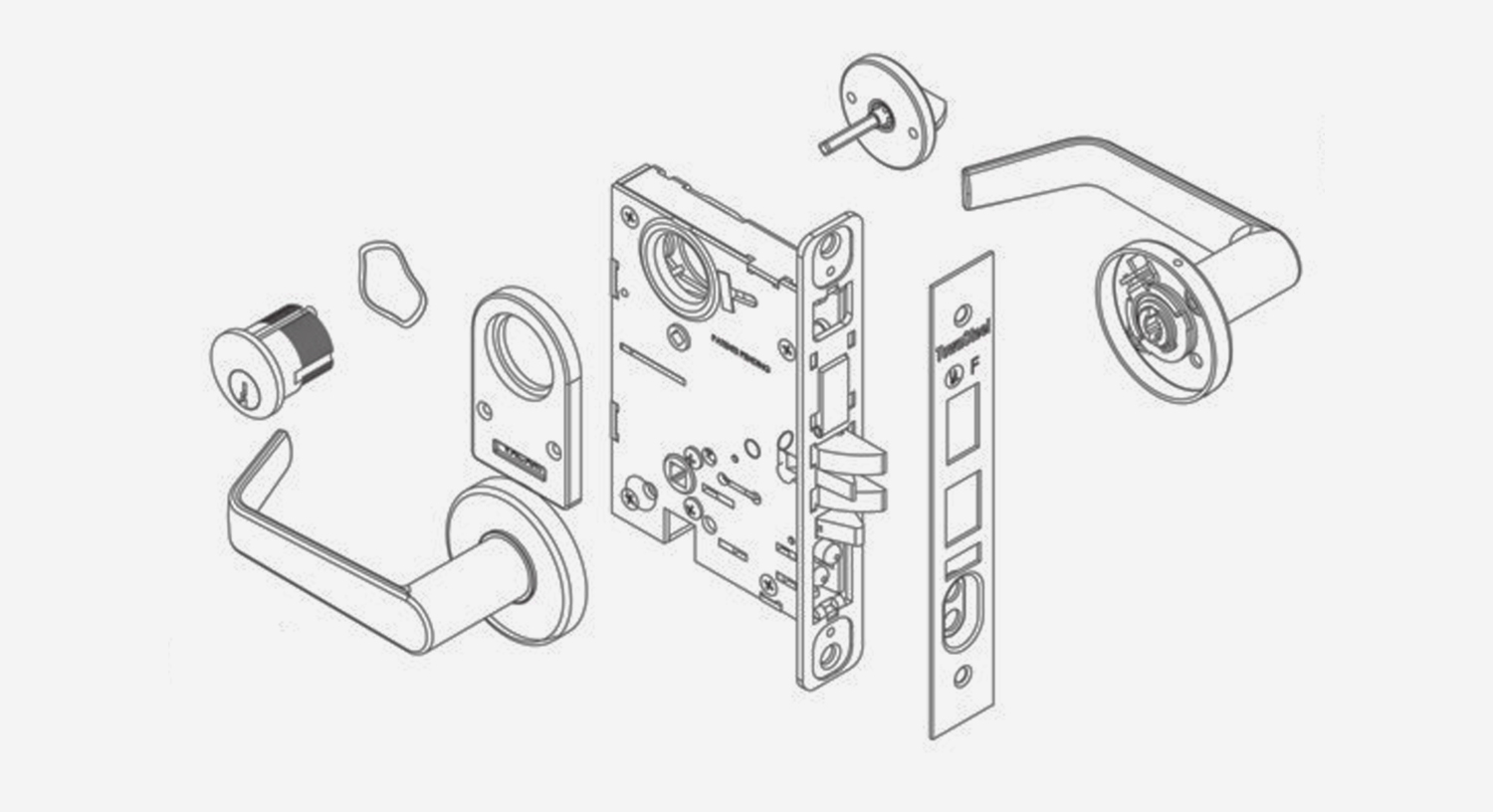
Multi-Point Locks
The best option for security is a multi-point lock which secures the door to the frame or an astragal at multiple points. This locking system provides a better seal, and enhanced security for your home. However, multi-point locks require additional preparation: a pocket in the edge of the door to accommodate the box mechanism and a channel routed in the edge of the door for the other points of contact.
Multi-point locks are especially beneficial in two scenarios. First, with 8’ doors, to prevent warping and maintaining a good seal the entire length of the door. Second, in extreme wind situations, when the pressure is so great that it could separate the door and weather strip, creating a leak.
Therma-Tru
The Therma-Tru door offering comes with a Therma-Tru approved, multi-point locking system. It has tongues that pivot out into the frame or shoot bolts that extend into the sill and head jamb. This lock has a unique feature that prevents the tongues or bolts from being extended when the door is in the open position, which prevents damaging the frame. The Therma-Tru multi-point lock is available in 5 trim styles in both narrow and wide widths, and 6 trim finishes.
Trilennium

The standard multi-point lock product for wood doors is the Trilennium lock from Endura. It features 3 latches that double as bolts when they are engaged. Latches differ from bolts in that they drop into the keeper without any action needed from the operator. The Trilennium lock also features an I-beam that increases the precision of the lock, but also strengthens the edge of the door as an additional measure to help prevent warping over the life of the door.
Tru-Lock
Note: Tru-Lock is not longer offered. This section will remain available as a reference.
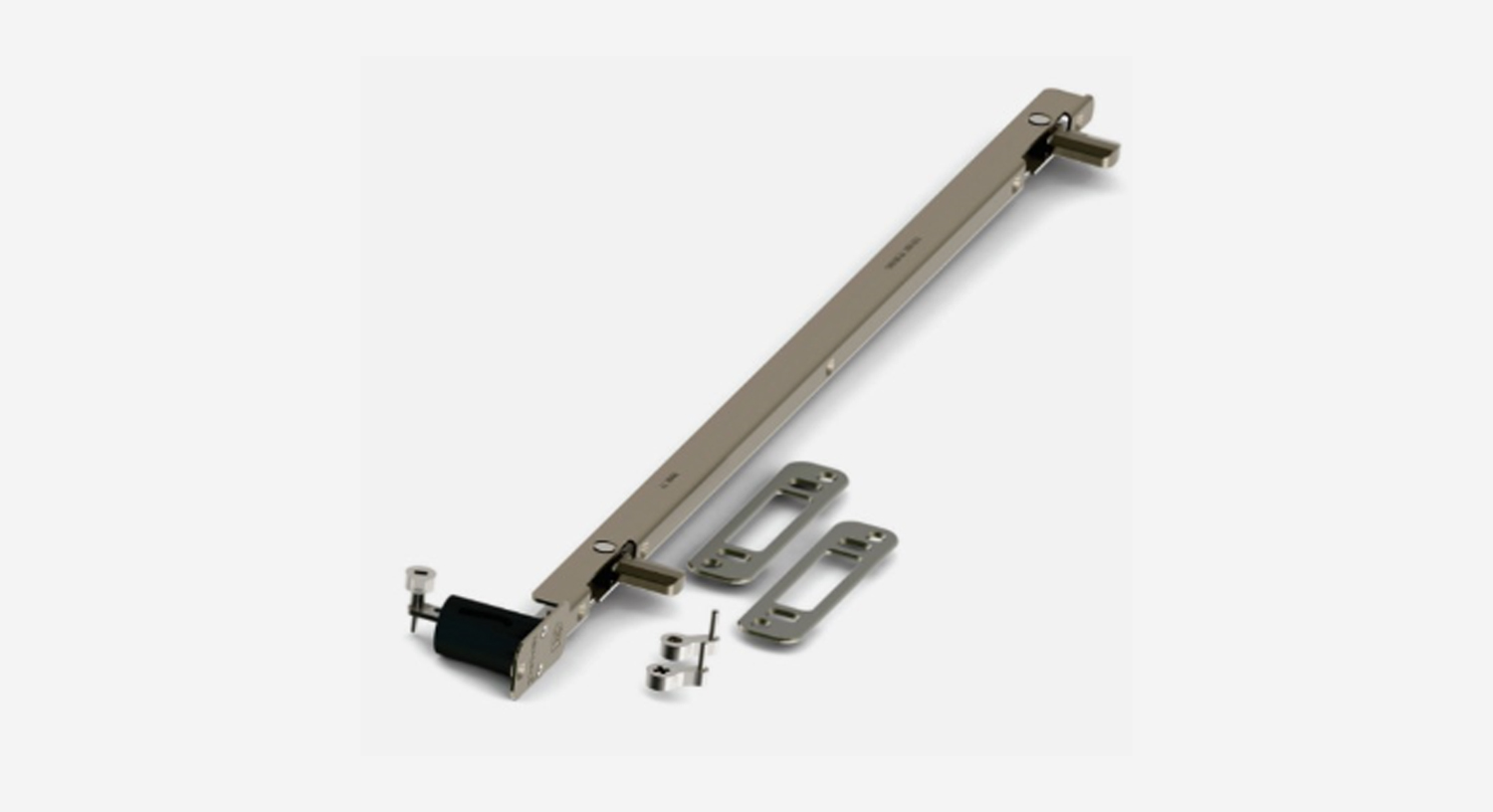
The third option is Tru-Lock. Tru-Lock offers 2 points of contact approximately 18” apart, and requires the least amount of prep. This product works in conjunction with standard deadbolt bores and hardware and is available in two finishes. Tru-Lock is an excellent choice when traditional knob or thumb-latch hardware is used, and it also serves as a great after-market two-point solution for security.
So you’ve got cylindrical, mortise, and multi-point locks. Of the 3, we prefer multi-point locks because of their superior sealing and security benefits. There are many options. Consider these options based on your own exposure and security needs.






















